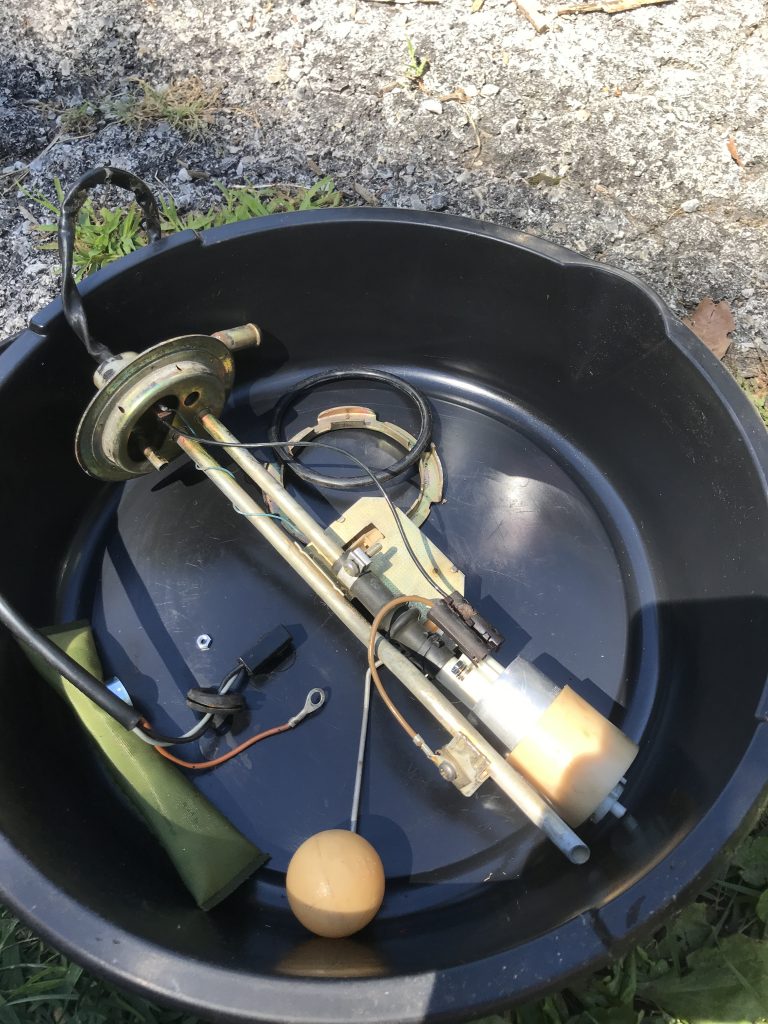Like a lot of stories with my car and its problems, this one starts with an attempt to take a ride with my kids. One evening we all piled in for a short jaunt around town only to get nothing but cranking when I turned the key. Listening when the key was turned, I wasn’t hearing the in tank fuel pump priming as it normally does. That thing had been getting louder and louder over the last few weeks, so its sudden death was not a huge surprise.

Nearly two years ago on the advice of a random list I found in my glove box, I replaced the in tank fuel pre-pump with an aftermarket pump made by the Airtex company. I kept the old one as I had suspected that it was actually fine. I’m glad I did this as it saved me from having to buy a new one. Installation was much easier this time as I’d done it before. It also afforded me the opportunity to inspect the sender unit to make sure there were no holes or other problems with it. Once the new/old pump was back in I started the car without issue. As a bonus the original was much quieter than its replacement. If I ever have to buy a new one I’ll definitely go for an original manufacturer part.
Fuel Pressure Check
Now that my car was running again I wanted to make sure that the engine was getting fuel at a sufficient pressure. If it wasn’t that would explain the issues I’d been having recently. The Volvo approved method of testing fuel pressure is to disconnect the line from the rail and use a special tool that would sit in line between them. I obviously don’t have this tool, so I bought something that looked like it would work of the internet. The fuel rail has a Schrader valve tube on its underside that presumably would take a pressure tester. I’m not sure that this is what it was meant for, but I couldn’t see why it wouldn’t.
The valve points straight down towards a bolt that hold the intake manifold to the engine, so space was tight. The kit I bought had a nice selection of fittings that included a nice 90 degree bend that made the connection possible. Once everything was hooked up I started the car, purged the valve of air, and saw the pressure go to about 40 psi. This is around where it should be, so that suggested I was getting good fuel pressure. I then turned the engine off and waited 20 minutes to see if the system would hold pressure. If pressure dropped low in that time it would suggest that the check valve at the main pump was bad. My pressure actually went up slightly after 20 minutes, which was a bit unexpected. I’m not sure how that works, but I don’t think it’s a problem.
Gudrun has been running well since with the only issue being this weird behavior at startup. After the engine starts, if I pump the brakes or put the car in gear too quickly the engine shudders and sometimes even stalls. I’m wondering if there is a vacuum issue somewhere that I’ll need to track down to finally solve that issue.


